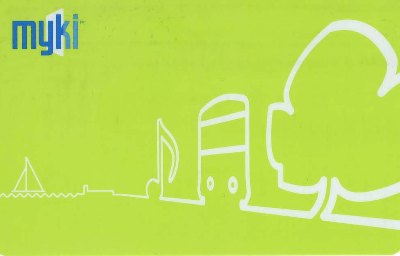My Oyster Card, My Myki Card
Monday, 1 March 2010Public transport smartcard systems are all the go. All over the world cities are rolling out computerised transport tickets which allow commuters to use one card to access multiple forms of public transport. For the transport operator it means efficiencies, for the transport user it means cost savings and, more important, convenience.
I’ve got two of them in my wallet, like almost anybody using public transport much in London I love my Oyster Card. I swipe it on the way into the tube station, swipe it again on the way out and it takes me all over London. It also operates on light rail systems, buses and even on some boat services on the Thames. My Oyster Card saves me money – a one-way trip costs £4 with a ticket, £1.80 by Oyster.
Buy an off peak all day ticket and change your mind after the first ride and you’re still paying for the whole day. Your Oyster Card charges you trip by trip until you reach the all day cost and stops right there. But best of all is you don’t waste time queuing up to buy tickets, I add £20, 40 or 50 on to my card and forget about it until it needs topping up.
Getting any Smartcard system up and running can be an expensive proposition, there’s lots of equipment to install at stations and/or on the trains, buses, trams, etc. More important there’s all the tricky software to make it work. Getting the Oyster Card up and running cost around £160 million pounds, around US$250 million. But London is a big, complex system. There are 400km of underground line, 270 stations, nearly 7000 buses and over 3 million daily tube commuters and even more by bus.

Other Smartcard systems have cost much less – Singapore’s EZ-Link cost about US$80 million, the Chicago Card cost about US$110 million. And then there’s Melbourne’s Myki Card – over US$700 million and counting because it doesn’t even work yet. I got a Myki card on 9 January and while it works fine on Melbourne’s train system (it knocks the standard two hour fare down from A$3.70 (US$3.30) to A$2.94 (US$2.65) that’s as far as it goes. Melbourne’s public transport system is big: nearly as many km of rail track as London, 200 stations, 500 trams and 250km of tram track.
The city’s real problem is that two hour ticketing system. Passengers have to swipe in and swipe out in order to make it work and they have to be able to do that not just from nice stationary train stations, easy to hard wire back to the central computers, but also from buses and trams , often sandwiched between towering blocks of buildings. Getting that to work has, so far proved impossible. So my Myki card is now seven weeks old and – despite that big investment – only doing half a job.






